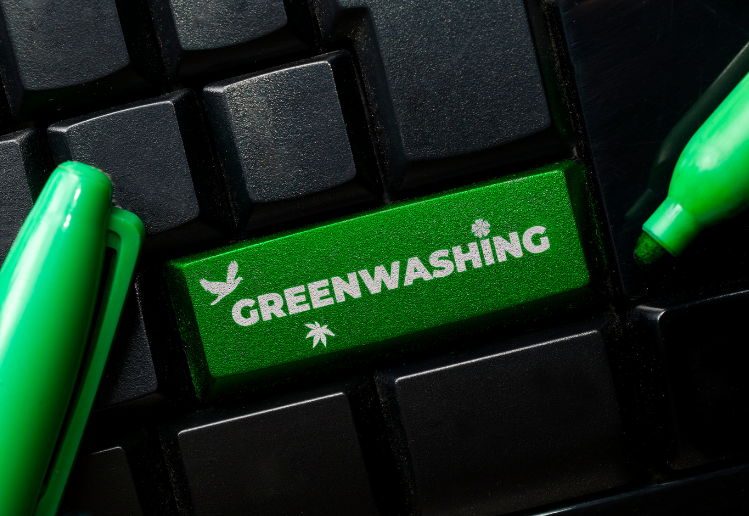The concentration of carbon dioxide (CO2) in our atmosphere, as of May 2020, is the highest it has been in human history. The climate emergency is here and now. However, the solution is a complicated and interdisciplinary challenge. My focus is on stopping greenwashing in marketing. Today, I am focusing on the fake solutions offered by companies through the practice of greenwashing. Plus, how you can spot it and avoid it as a consumer and business.
What is greenwashing?
As always, let’s first establish what we mean by greenwashing. Greenwashing is a form of marketing in which “green” or environmentally friendly values are used to persuade consumers that an organisations products, services and company policies are eco-friendly. In reality, these claims are either completely false or don’t tell the whole picture. The term comes from ‘whitewashing’, a casting practice in the film industry in which white actors are cast in non-white roles. In this context, film producers are using white actors to make the predominately white audience feel comfortable in their viewing. Greenwashing works in the same way. It makes consumers feel comfortable with purchasing from a company that supposedly aligns with their values.
Greenwashing Marketing Examples
To get a better understanding of how organisations use greenwashing to marketing, I have put together some examples of the types of practices undertaken by companies. Some of which are ironically the biggest polluters on the planet.
British Petroleum: Eco-friendly oil spills?
After the Deepwater Horizon oil spill disaster of 2010, British Petroleum (BP) have been on a quest to improve their image. In 2019, environmental lawyers launched an unprecedented complaint against BP for “greenwashing”. They disagreed with advertising that promotes the oil company’s environmental credentials, despite the majority of its planned investment being in oil and gas. BP has clearly not learned anything from the 2010 disaster. They continue to invest in products that will destroy the environment and accelerate the climate crisis. Any attempt by oil and gas companies to present as eco-friendly is the clearest example of greenwashing we have.
Coco-Cola: The world’s Biggest Plastic Polluter
Coca Cola is the world’s biggest plastic polluter, producing 2.9 million metric tons of plastic each year. So, it’s a bit more than cheeky for them to claim sustainability on their marketing and packaging. Coca-Cola’s recent advertising campaign claimed: “Single-use plastic bottles are only single-use if they are thrown away. The plastic in our bottles can be recycled many times”. This pushes the responsibility on to the consumer and not the multi-billion dollar corporation creating the waste. Their greenwashing tactics have resulted in an environmental group in the San Francisco Bay area suing coca-cola. They are also suing other plastic polluters like Pepsi and Nestle.
Innisfree: Not Actually A Paper Bottle
A very recent example of consumer product greenwashing was from the brand Innisfree. Their bottle of Green Tea Seed Serum looks to come in a bottle made out of natural fibres. Plus it features a green label stating, “Hello, I’m Paper Bottle”. Sounds great, until one customer unwrapped the bottle. Turns out there was actually a plastic bottle hidden inside the paper casing. Consumers were clearly outraged, as they felt they had been duped into choosing the product. Innisfree hit back at complaints stating that the bottle had 51.8 percent less plastic than conventional packaging. They said they included instructions on how to separate and recycle the bottle and were not trying to hide it. Unfortunately, this clearly shows a lie by omission.
Why Greenwashing is Bad?
These few examples are part of a large problem facing consumers and societies today. As ethical consumers bases grow, their spending power is being directed to more environmentally conscious companies. Larger companies that do not follow these practices, see this trend of ethical consumers and want their cash once more. As a result, they are creating these greenwashing campaigns. This is an issue because the company is:
- Lying to consumers to gain sales, which in many cases is illegal under advertising law.
- Being funded by these coercive sales to continue polluting the world.
- Taking money away from organisations that are actually producing better products and services.
- Causing further distrust around environmental and sustainable labels.
What is the solution to greenwashing in marketing?
Without industry and government intervention, we will continue to see large greenwashing campaigns on a larger scale. As a consumer, business and/or marketer, here are some things you can do to fight against greenwashing.
- Research a company before buying. While this can take time and effort, you will find quality brands that you know you can trust going forward.
- Don’t greenwash your marketing. Never make claims that are not true. Don’t use colouring and branding to fake green values.
- Improve your business practices. By improving your internal practices and policies, you’ll be making the world a better place. Plus you will attract customers who want to invest and buy from you.
If you are looking to improve your green credentials through your marketing, get in touch. I have a focus on reliable, research-driven, ethical marketing. Furthermore, I avoid greenwashing but help brands build more sustainable practices into their business and its marketing. Get in touch with me today, to find out how we can grow your business together.

